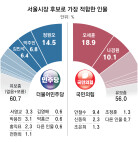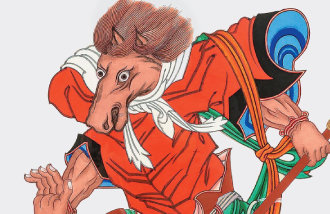Hole in the Government Administrative System Disclosed by the Presidential Committee
Hole in the Government Administrative System Disclosed by the Presidential Committee
Posted May. 31, 2005 06:42,
After it was reported that the Presidential Committee on the Northeast Asian Cooperation Initiative (PCNACI) supported the Haengdam Island development project and requested the suspension of a navy operation facility construction project, many are pointing out the need for check system on the presidents advisory committees.
Currently, there are 12 advisory committees directly under the president to pursue mid to long-term national projects. However, there are voices of criticism saying that these presidential committees are free from supervision because there is no adequate check system, as was shown in the PCNACIs controversial support of the Haengdam Island project.
Ambiguous Rights and Roles of Advisory Committees-
The presidential advisory committee is a new, unique administrative system introduced by President Rohs government.
After coming into the office, the current government created six governmental project committees to review the planning of roadmaps and the status of mid and long-term national projects. The Presidential Commission on Sustainable Development and the Presidential Commission on Agriculture, Fishery and Rural Polices existed in past governments, but were re-established as governmental project committees. These eight committees are supervised by the Presidential Committee on Policy Planning.
Unlike governmental project committees, the Presidential Committee for Culture Cities and the Presidential Committee on Judicial Reform are advisory groups founded for the specific purposes of creating a culture city in Gwangju and pursuing judicial reform, respectively.
These groups were designed to overcome barriers among the various government agencies. In other words, when long term projects that require several agencies are assigned, agencies focus only on their own businesses and neglect other irrelevant issues, and that is what these advisory groups were meant to overcome.
Such an aim is positive, but in reality, in the process of running things, the groups often went ahead and exerted important policy decisions instead of only aiding the president.
For instance, the Presidential Committee on Government Innovation and Decentralization actively intervened in local autonomous police force issues and opened up Ministry of Foreign Affairs and Trade ambassador posts, exerting significant influence.
Out of the 12 committees, only the Presidential Committee on Balanced National Development and the Presidential Commission on Agriculture, Fishery and Rural Polices were created on legal bases. The rest were created by presidential decree and were meant to function as advisory and review groups.
No Checks on Committee Activities-
The activities of presidential committees belong both to the Presidential Policy Office and the Presidential Committee on Policy Planning, and are supervised by the Governmental Project Secretariat, which acts as a bridge between Cheong Wa Dae and the committees.
The main role of the secretariat is to review the status of policies being executed by each committee. Nevertheless, it is overwhelming for a single secretariat to check all the detailed activities of all the committees.
Cheong Wa Daes Civil Secretariat and Government Situation Office usually focus on the activities of the governmental agencies and institutions, so normally it does not check presidential committees. In all, the presidential committees, being in a blind spot, are not subject to regular reviews of checks.
However, Cheong Wa Dae spokesperson Kim Man-soo said, The presidential committees are subject to audits by the Board of Audit and Inspection, and have the duty of appearing at the National Assembly to report, so it is not as if there are no checking devices.
Jung-Hun Kim jnghn@donga.com




![“작년에 얼린 떡으로 떡국 No!”…냉동 떡 2달 지나면 버려야 [알쓸톡]](https://dimg.donga.com/c/138/175/90/1/wps/NEWS/IMAGE/2025/12/31/132975107.3.png)


